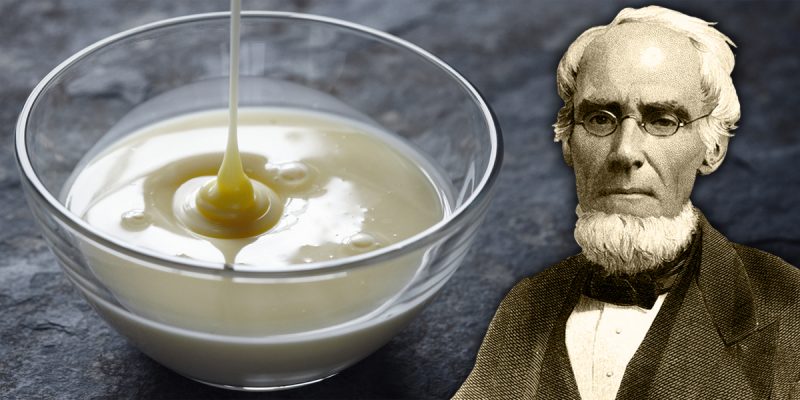Throughout the ages, humans have tried to invent ways to preserve food over long periods so that it can be stored and used in times or places where fresh food isn’t available. One such invention modernized the dairy-products industry and helped save thousands of children. In the middle of the 19th century, a New York-born amateur inventor called Gail Borden revolutionized the process of condensing milk, making this essential product safer and more available to people.
Before 1856, milk was only available fresh. This posed a huge problem on ships, for example, as during longer voyages, they had to carry herds of cows to produce the fresh milk needed for the passengers, especially small children. The cows, which are not sea animals, often got seasick and didn’t produce the milk that was needed for the journey. Borden was on one such journey and saw how children suffered due to lack of milk on board.
Gail Borden had done many different things in his life. He started as a land surveyor and participated in the making of the first topographical map of Texas. Then, without any previous experience, he started working as an editor for a fairly successful newspaper, the Telegraph and Texas Register. After this experience, he went into politics for a while, before devoting himself to the improvement of the food-preservation process.
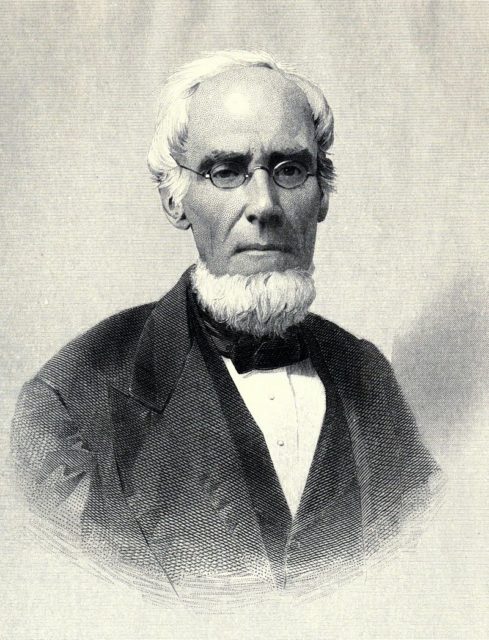
Borden’s first food-related invention was a meat biscuit, a dehydrated-beef-meat essence that was inspired by the traditional Native American dried meat called pemmican. Although not very economically successful (the biscuit was unpalatable), this product brought Borden a gold medal at the 1851 London World’s Fair. On his way back from the exhibition, on a ship from London to New York, he witnessed something terrible. The cows on board the ship got seasick and then died from an infectious disease. This was not all. The children who drank the infected milk also died. Borden was horrified and decided to try and do something about this issue and stop the suffering.
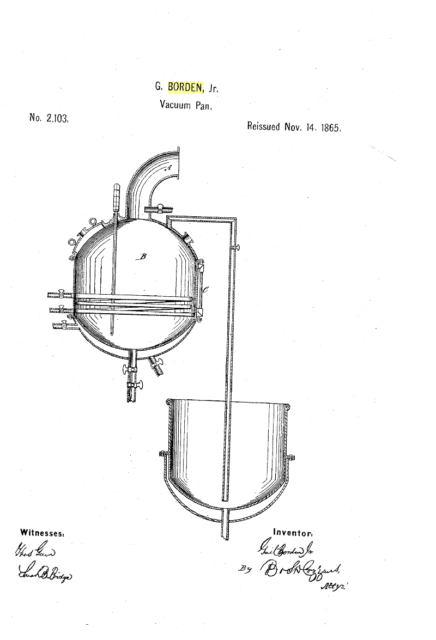
Back in New York he closed himself up in his Brooklyn basement “laboratory” and started working out a way to preserve milk. He first took a gallon of milk and tried boiling it in an open pan. He boiled all the excessive water until only a small amount of milk essence was left. The result was a dark and disgusting substance that tasted like scorched molasses. He tried to taste it, but it was terrible. This wasn’t working, and he needed a different approach.
One day, he went to visit a Shaker Colony. He saw something interesting: The Shakers were boiling fruits in order to dehydrate them, and they used a special vacuum pan for this. Borden thought that he could do the same with milk. All liquids boil at lower temperatures when they are in an atmosphere in which the pressure is reduced. This means that Borden could boil the milk in a vacuum pan without burning it and without destroying its taste.
In the vacuum pan, milk boiled at 136 degrees Fahrenheit instead of 212 in normal conditions. This way, the milk still tasted nice and kept its color, but more importantly, it could be kept drinkable over long periods of time. Although Borden didn’t know about the existence of bacteria in milk, he claimed that milk is a “living fluid.” Contemporary scientists also knew that something in the air made milk go sour after a while.
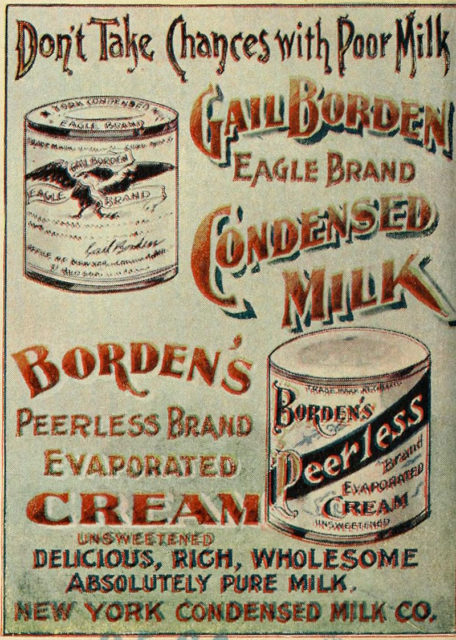
Gail Borden kept improving and refining his model of an industrial vacuum pan for condensing milk, and after three years of hard work, in 1856, he got the patent. This time, he decided not to make the same mistake as with the meat biscuit. He was determined to make a profit, but in the beginning, things didn’t go too well. His first two factories for condensed milk weren’t very productive, and people weren’t used to the taste of condensed milk. His financial backers wanted to see money on the table and withdrew, and he was forced to close the factories. Borden’s luck turned when he met Jeremiah Milbank, who was a wealthy New Yorker in the railroad and banking business. He saw great potential in condensed milk and decided to invest in it. Milbank gave Borden more than $100,000, and together they opened the New York Condensed Milk Company.
Sales of condensed milk immediately went up, and Borden’s condensed milk factories started to pop up everywhere around the states of New York and Illinois. When the Civil War began in 1861, condensed milk found another customer: the Union Army. The Union generals bought hundreds of tins of condensed milk for their soldiers. In just a few years, Borden managed to completely change the milk products industry.
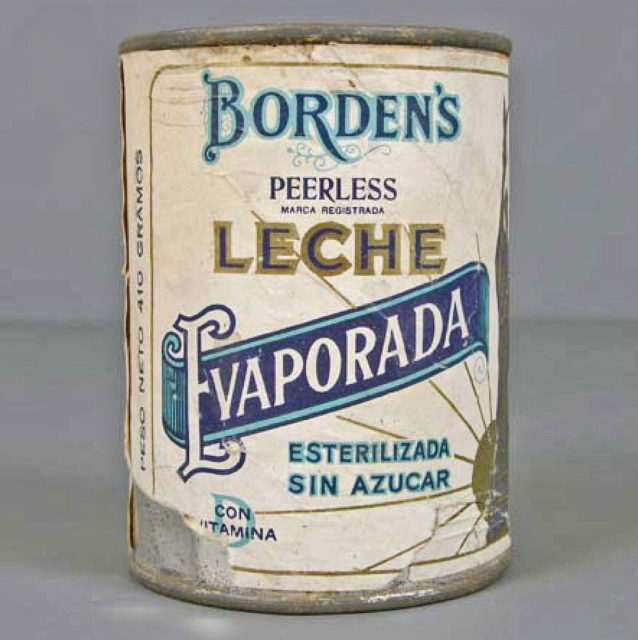
Besides being successful at sales, Borden wanted his company to have the highest production standards of the time. Before he started making condensed milk, almost nobody considered the importance of sanitary conditions. Cow keepers didn’t care at all. Many of the cows were diseased, and milk was transported to the local buyers in the same carts in which they carried manure. Back in those days, there was no sanitary inspection. Borden started to do things differently. His company was proud of the safety and purity of their milk, and he intended to keep things that way. That is why Borden sent his own sanitary inspectors to all the cow farms that distributed milk to his factories. They needed to follow his instructions if they wanted to work with him.
Borden demanded several things from the farmers he worked with. His inspectors had a checklist called “the Dairyman’s Ten Commandments.” The temperature of the milk wasn’t supposed to be over 52 degrees; the udders of the cows had to be cleaned before milking; the milk cans should be cleaned before use; and many other strict rules. In the beginning, farmers were reluctant to accept his rules, but soon they saw the benefit and agreed to make their farms and milk better.
Condensed milk made the world a healthier place and saved thousands of children and men. Mothers began to feed their children with Borden’s product (Eagle brand condensed milk) and the children who grew up drinking it were nicknamed “Eagle Brand Babies.” Not entirely aware of the significance of his work, Borden sterilized milk decades before the criticality of the pasteurization of milk was scientifically proved. Most of Borden’s sanitary standards are still in use today, which speaks tons about the remarkable work he did for humanity.
